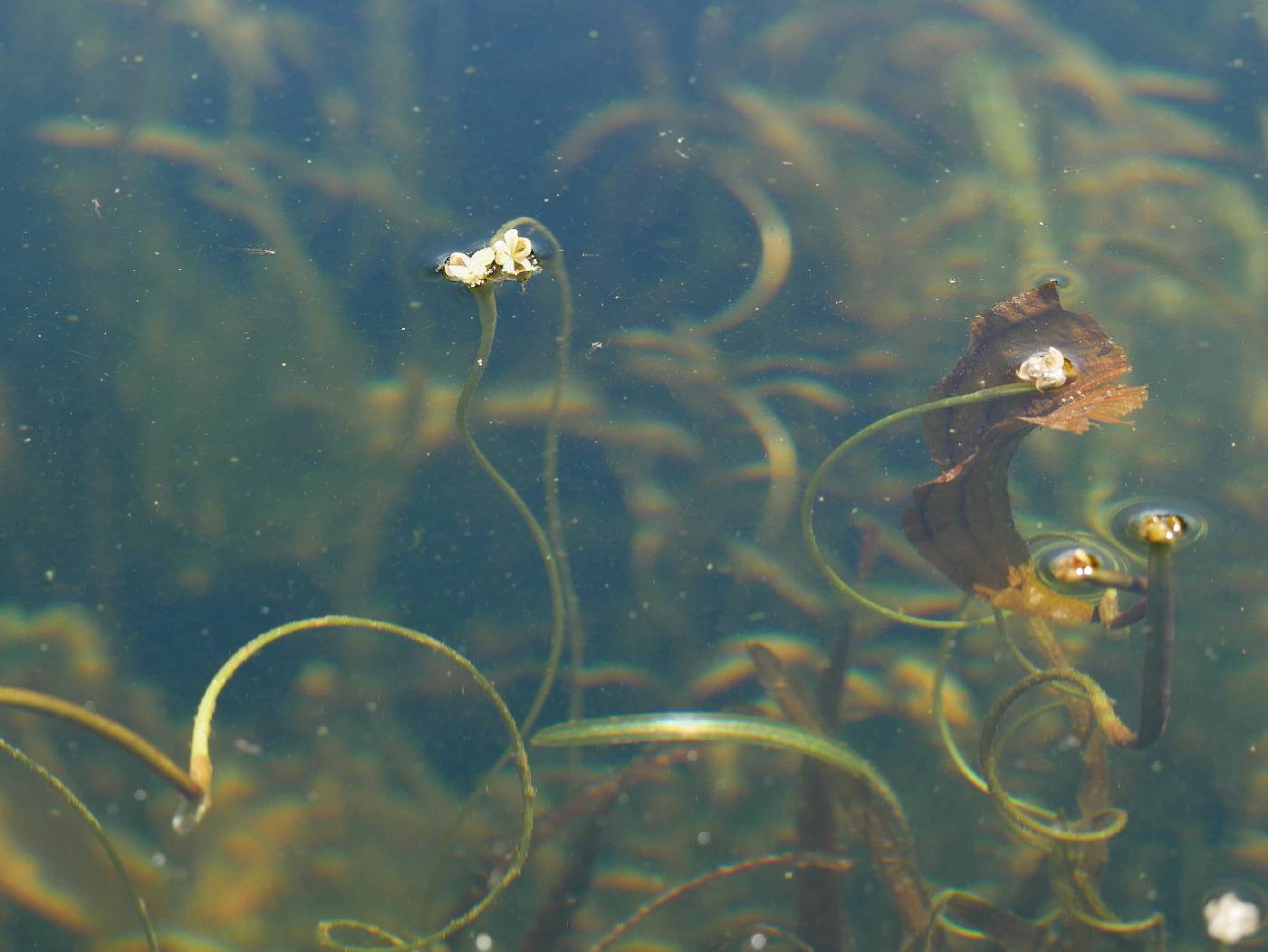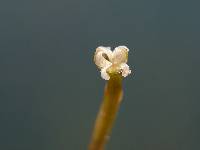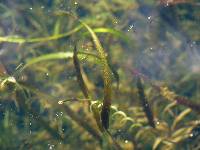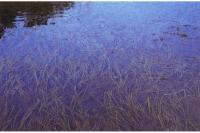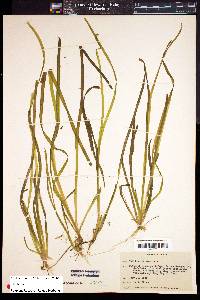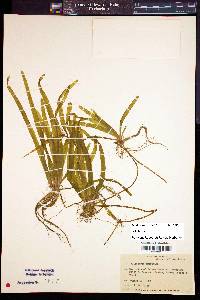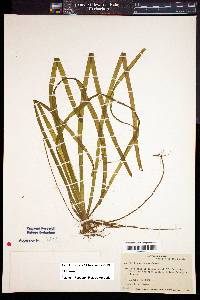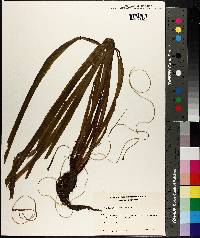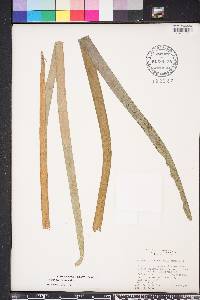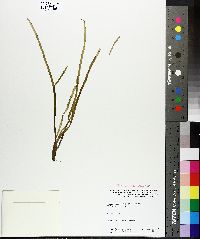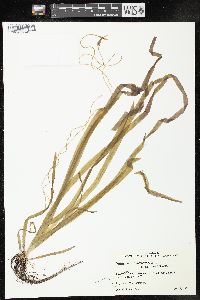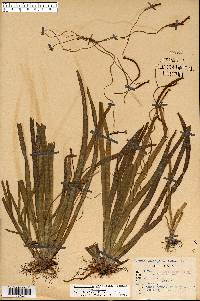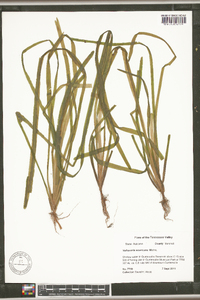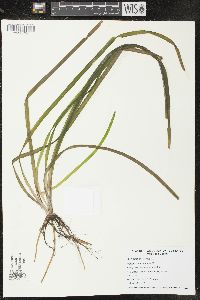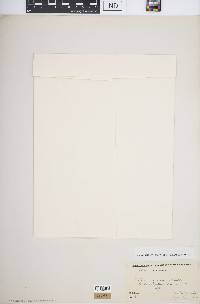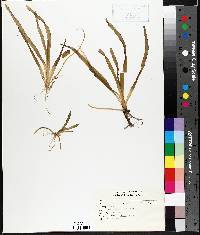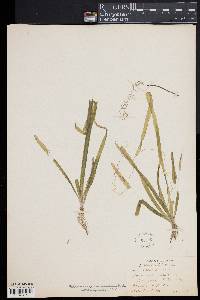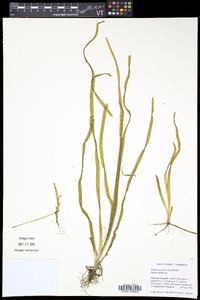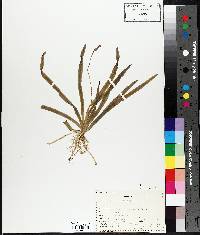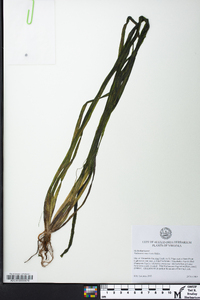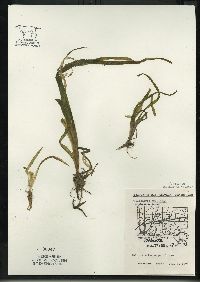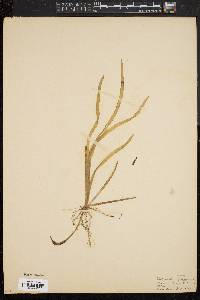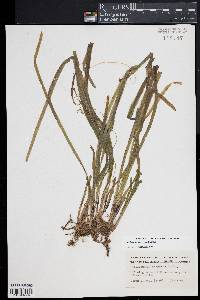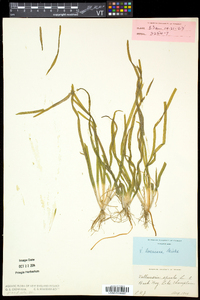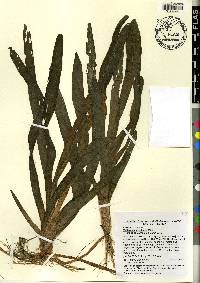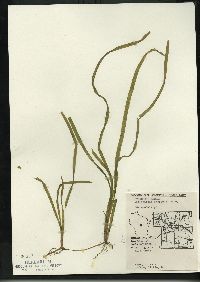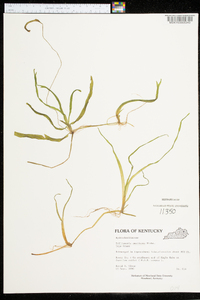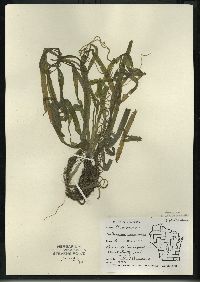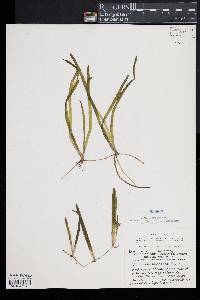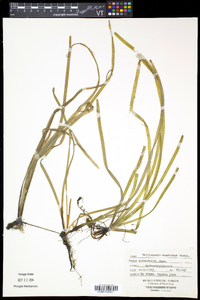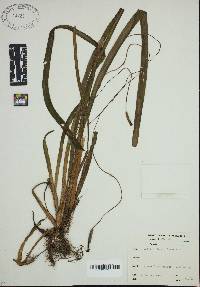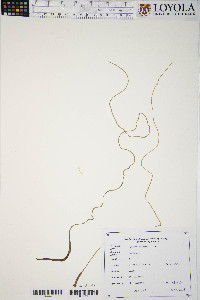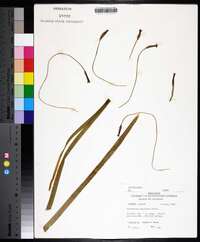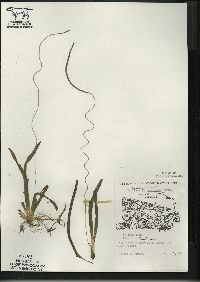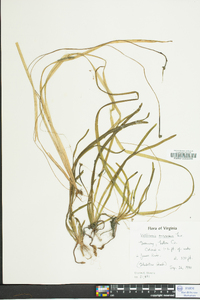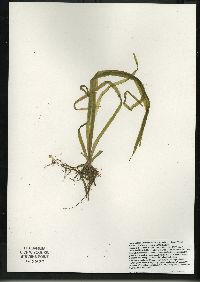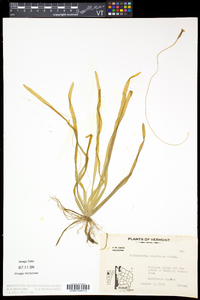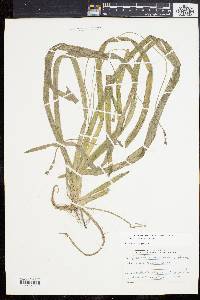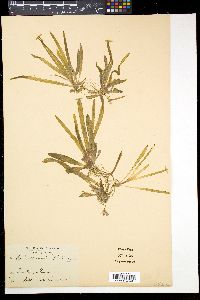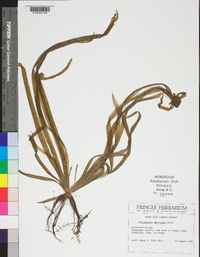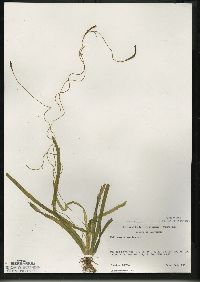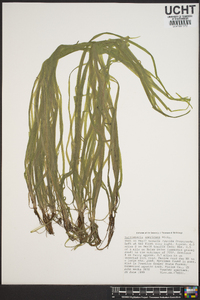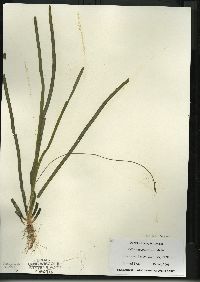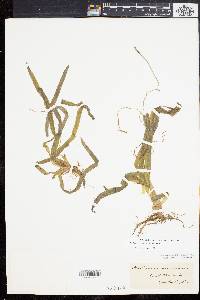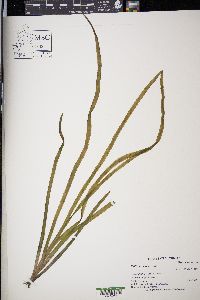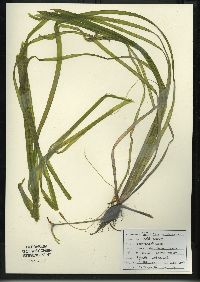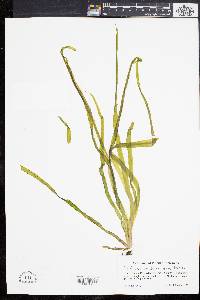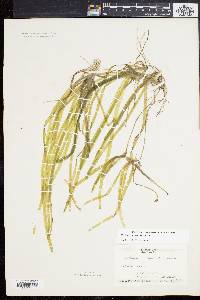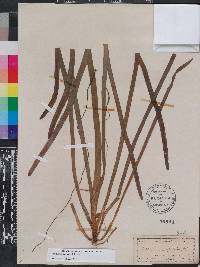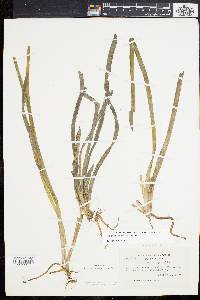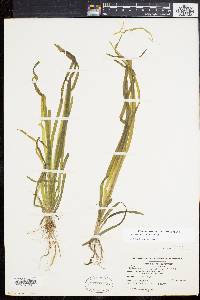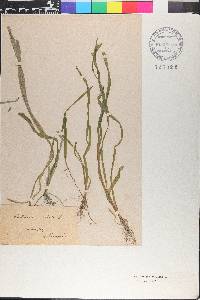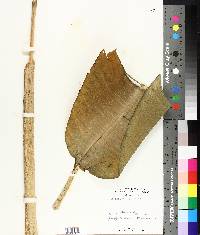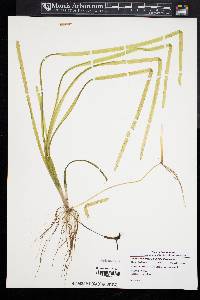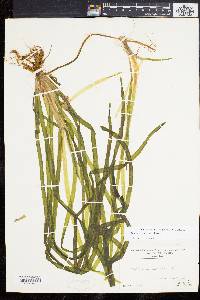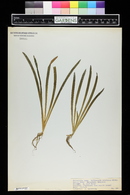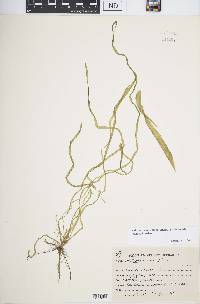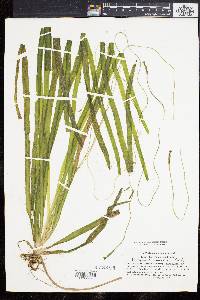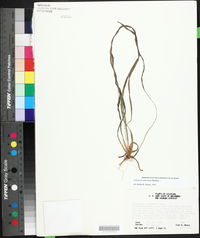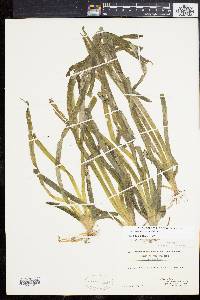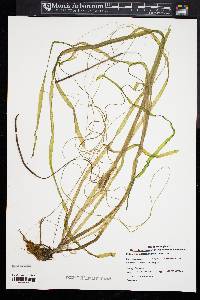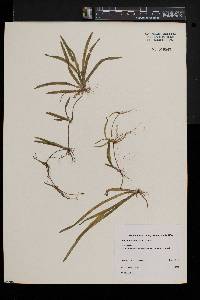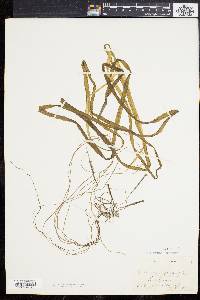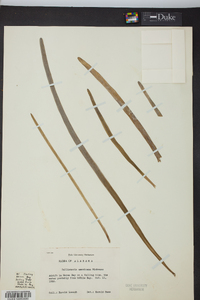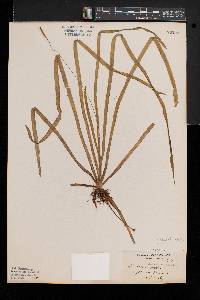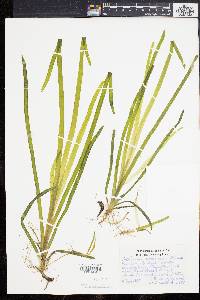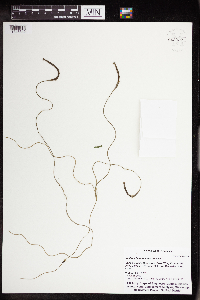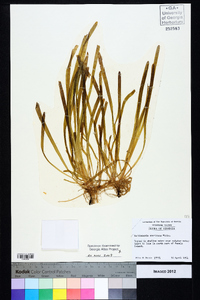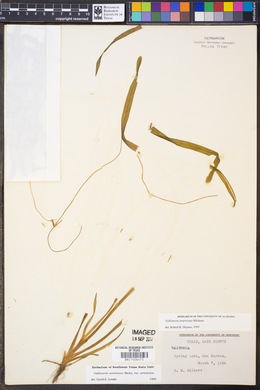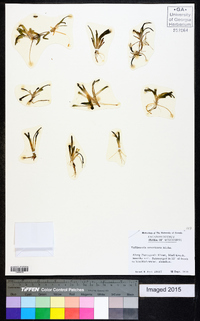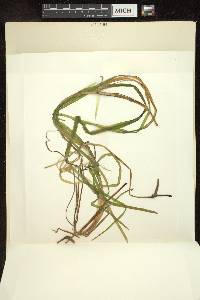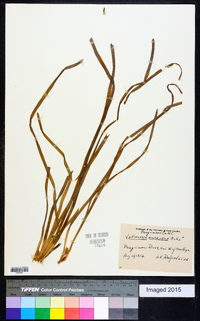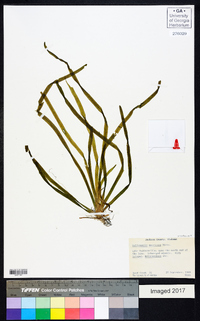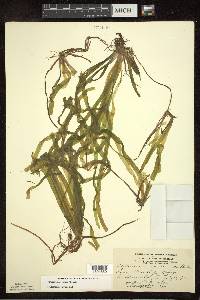
|
|
|
|
Family: Hydrocharitaceae
American Eel-Grass, more...American eelgrass, Large Eel-Grass, eel-grass, watercelery
[Vallisneria asiatica Michx., moreVallisneria neotropicalis Victorin, Vallisneria spiralis auct. non L., Vallisneria spiralis var. americana (Michx.) Torr., Vallisneria spiralis var. asiatica (Michx.) Torr.] |
Scapes: staminate scapes 30--50 mm, submersed; pistillate scapes elongate, projecting flowers to surface. Leaves 10--110 ´ 0.3--1.5 cm; leaf blade 3-zoned longitudinally, margins entire to serrate. Flowers: staminate flowers 1--1.5 mm wide; stamens 2, filaments basally connate; pistillate flowers solitary, rarely in umbel-like clusters. 2n = 20. Flowering summer--fall. Fresh to brackish waters of streams, lakes, rivers, and bays; 0--500 m; Man., N.B., N.S., Ont., Que.; Ala., Conn., Del., D.C., Fla., Ga., Ill., Ind., Iowa, Ky., La., Maine, Md., Mass., Mich., Minn., Miss., Mo., Nebr., Nev., N.H., N.J., N.Y., N.C., Ohio, Oreg., Pa., R.I., S.C., S.Dak., Tenn., Tex., Vt., Va., Wash., W.Va., Wis.; Mexico; West Indies; Central America; Asia. Vallisneria americana plus various species of Sagittaria, Sparganium, and Blyxa aubertii form usually sterile basal rosettes of long, linear leaves in shallow water in North America. Vallisneria can easily be separated from the others by the following combination of char acter states: base of leaves nearly flat in cross section, broad band of lacunae along each side of midvein, roots without cross septa, and absence of milky juice. The three other genera have a different combinations for these characters. Vallisneria spiralis Linnaeus has been reported in some of the older literature as being represented in North America. These reports are all based on a misapplication of the name V. spiralis and are actually V. americana. In warmer waters of southeastern United States are some populations of Vallisneria with much larger leaves that have been given the name V. neotropicalis. After considerable study of populations in the field, the plants formerly known as V. neotropicalis were determined to be just larger individuals of V. americana (R. M. Lowden 1982).
Perennial aquatic herb to 2 m long Stem: submersed, short, unbranched, rooted in substrate and spreading by runners. Leaves: basal, stalkless, three-zoned with a light green middle zone and darker green outer zones, 10 cm - 2 m long, 0.3 - 1.5 cm wide, ribbon-like with base grading into a sheath and a rounded to abruptly pointed tip, non-toothed to toothed, very thin. Flowers: either male or female, found on different plants (dioecious), with transparent petals. Fruit: a cylindrical, ridged capsule opening irregularly to realease many seeds. Male flowers: submersed, borne on a flat-topped inflorescence atop a 3 - 5 cm long stalk, surrounded by an egg-shaped two-parted leaf-like sheath with a short stalk (spathe), separating from the stem and floating to the surface when blooming. Female flowers: floating, borne solitary on an elongating stalk that extends to the surface, surrounded by a tubular cleft leaf-like sheath (spathe), white. The flower stalk coils after fertilization to submerse the fruit. Similar species: Vallisneria americana is easy to distinguish from other Chicago Region aquatic species with ribbon-like leaves by having a lighter green center zone on its leaves. Flowering: late July to mid September Habitat and ecology: Local in the shallow, quiet water of streams and lakes. Occurence in the Chicago region: native Etymology: Vallisneria is named after Antonio Vallisnera (1661 - 1730), a Spanish scientist. Americana means "from America." Author: The Morton Arboretum Lvs very thin, to 2 m, 3-10 mm wide, seldom more; staminate scape stout, 3-15 cm, the fls only 1-1.5 mm wide; stamens erect, with short, ±connate filaments, the androecium surrounded by a ring of short hairs; pistillate fls white, the sep 3.5-6.5 mm; staminodia adnate to the short style; fr 5-12 cm. In quiet water; N.S. and Que. to Minn. and S.D., s. to trop. Amer., and irregularly widespread elsewhere. July-Oct. Ours are var. americana. Gleason, Henry A. & Cronquist, Arthur J. 1991. Manual of vascular plants of northeastern United States and adjacent Canada. lxxv + 910 pp. ©The New York Botanical Garden. All rights reserved. Used by permission. From Flora of Indiana (1940) by Charles C. Deam Infrequent to frequent or even common in the lakes of the lake area and rare in our streams, except those of the lake area where it may be common. The sepals of my specimens and those which I have measured in the field are rounded at the apex and 3-3.5 mm wide and 3-5 mm long, usually slightly less than 4 mm long. The peduncles of the staminate inflorescences are mostly about 1 cm long and the leaves are 6-8 mm wide. The widest leaf I have been able to find was 9 mm wide. …… Indiana Coefficient of Conservatism: C = 7 Wetland Indicator Status: OBL |
|
|
|
This project was made possible in part by the Institute of Museum and Library Services [MG-70-19-0057-19].
Powered by Symbiota

